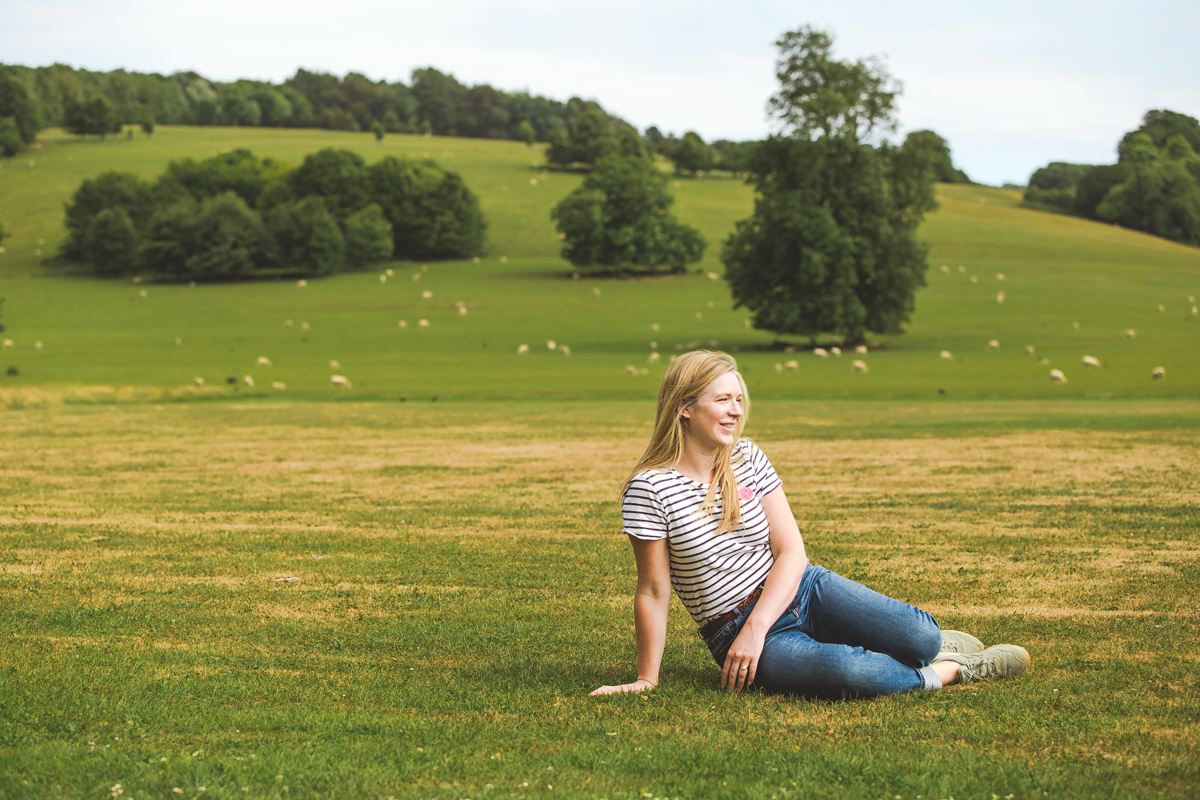Your complete guide to National Trust spots in West Sussex
We are so lucky to have such an abundance of historic properties and acres of beautiful parks, woodlands, gardens and countryside under the National Trust in West Sussex.
From stately homes and castles to nature reserves, beaches and botanical gardens, there is something magical for people of all ages and abilities to explore.
We’ve outlined your complete guide to West Sussex’s National Trust destinations by location.
Arundel
Slindon Estate
The Slindon Estate encompasses 1400 hectares of countryside, parkland and farmland, and includes the picturesque village of Slindon. No matter which season you visit, you’ll find plenty of walks and cycle routes suitable for all to enjoy.
Don’t miss: Slindon village’s local shop and café, the Forge. Stop by for fresh and local produce or wind down after a long walk with a hearty lunch or cream tea.
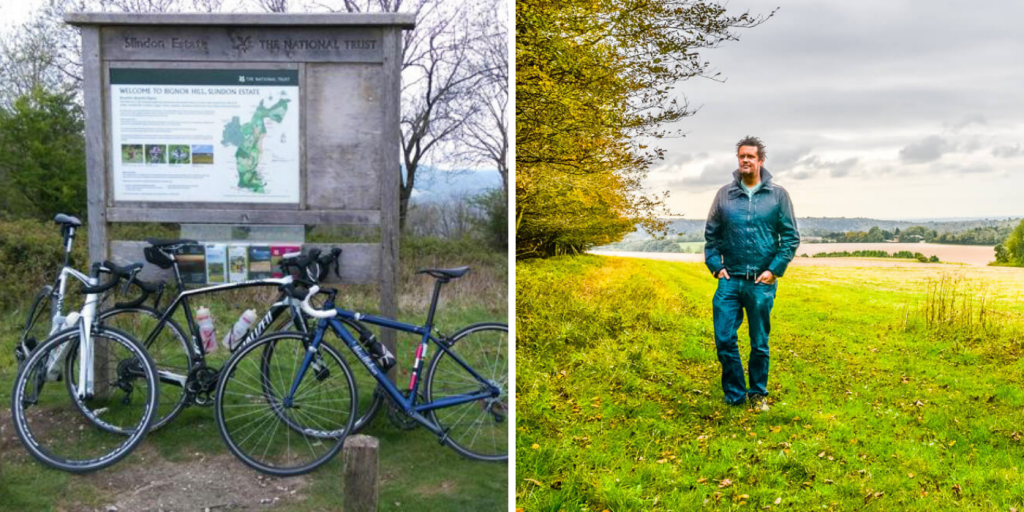
Chichester
East Head, West Wittering
East Head is described as one of the last surviving natural coastlines in West Sussex, with its beautiful stretches of shingle, sandy beach and dunes. The perfect destination for a family picnic, a romantic stroll or a paddle, East Head also has stunning views across Area of Outstanding Natural Beauty, Chichester Harbour, where you may even spot some of the local seals!
Whilst you’re there: Why not stop by The Lamb Inn for locally sourced seafood and woodfired pizza?
Drovers Estate
One of the lesser known National Trust spots, Drovers is a hidden estate just waiting to be discovered by keen walkers, explorers and nature lovers. Slightly more off the beaten path and home to various species of bats, you can enjoy woodland trails and open views of rolling hills.
Just down the road: Be sure to check out nearby West Dean Gardens and peruse the stunning gardens.
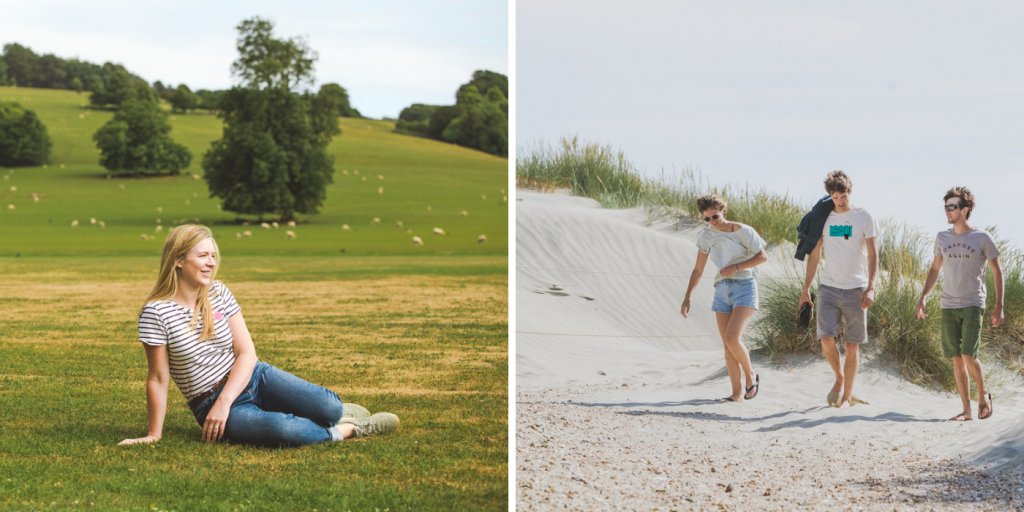
Crawley and East Grinstead
Nymans
A stunning collection of unusual plants and flowers awaits you throughout all seasons at Nymans, with the dramatic ruins of the house’s Great Hall now open for visitors to explore. The wider estate is brimming with local wildlife, from butterflies and insects to foxes, deer and badgers, making the woodland and gardens an exciting place for everyone to discover.
Nearby highlights: The Ouse Valley Viaduct casts a striking and elegant silhouette against the surrounding High Weald area, a must see for keen photographers or historians.
Standen House and Garden
Standen House is not your typical stately home. Nestled within rural East Grinstead, the family home and country retreat was built within the Arts and Crafts movement of the mid-late 19th century and is adorned with the original interiors and furnishings of Morris & Co. Lovers of art and design will enjoy the changing exhibitions, whilst younger ones can get involved in unique crafting sessions. Families can also explore the 100 acres of ancient woods, meadowland and gardens with their four-legged friends.
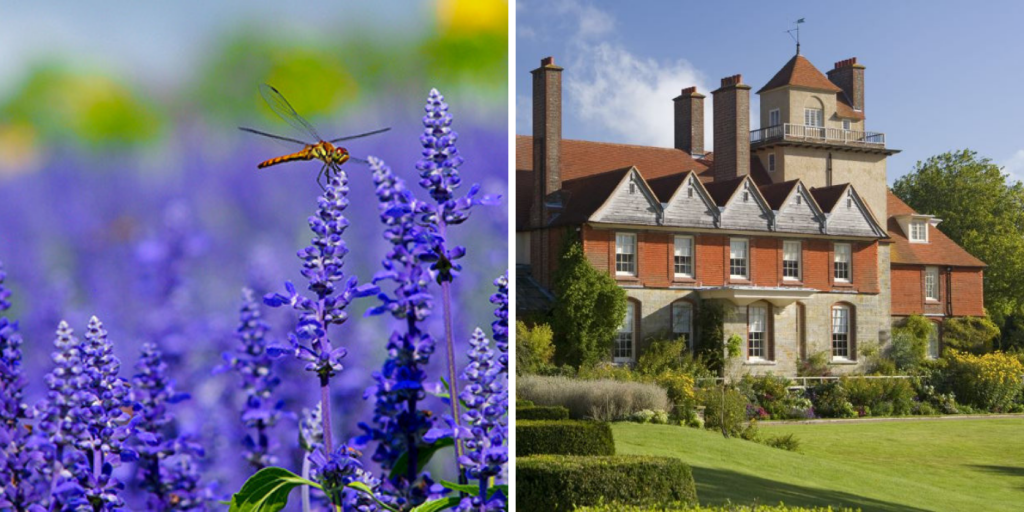
Hassocks and Haywards Heath
Devil’s Dyke
We dare you not to be impressed by the spectacular panoramic views up on Devil’s Dyke, the UK’s longest, deepest and widest valley in the UK. From microscopic toy villages nestled in the countryside to views out to sea across Brighton, Worthing and Shoreham Harbour, you’ll see it all. Take in the sights on a walking or cycle route before stopping off at one of the local village pubs for a hearty meal or enjoy a picnic whilst overlooking the scenery.
Did you know? Legend has it that Devil’s Dyke was dug out by the Devil himself to drown out the population of the Weald.
Saddlescombe Farm and Newtimber Hill
Saddlescombe Farm is part of an environmental project with the National Trust to establish nectar and pollen-rich areas, restore hedgerows and manage species of grassland. It also operates as a working sheep, cow and pig farm that welcomes visitors and school groups.
The surroundings of Newtimber Hill borders the farm, offering wonderful views of the South Downs, sea and rare wildlife and creating the perfect setting for a family adventure.
Hidden gem: Quirky farmside café, Wildflour Café, is run out of a caravan and offers a tasty variety of cakes and treats, lunches and delicious coffee.
Wakehurst
Wakehurst comprises 500 acres of woodland, meadows and ancient terrain. The gnarled tree trunks and nature reserves fluttering with butterflies and local wildlife will transport your little ones to a fairy-tale world, whilst regular events such as open-air theatre shows, craft workshops and immersive mindfulness courses will be perfect for those looking for an injection of culture.
Look out for: Just down the road, the largest international antiques and collectors fair in the South of England is held several times a year.
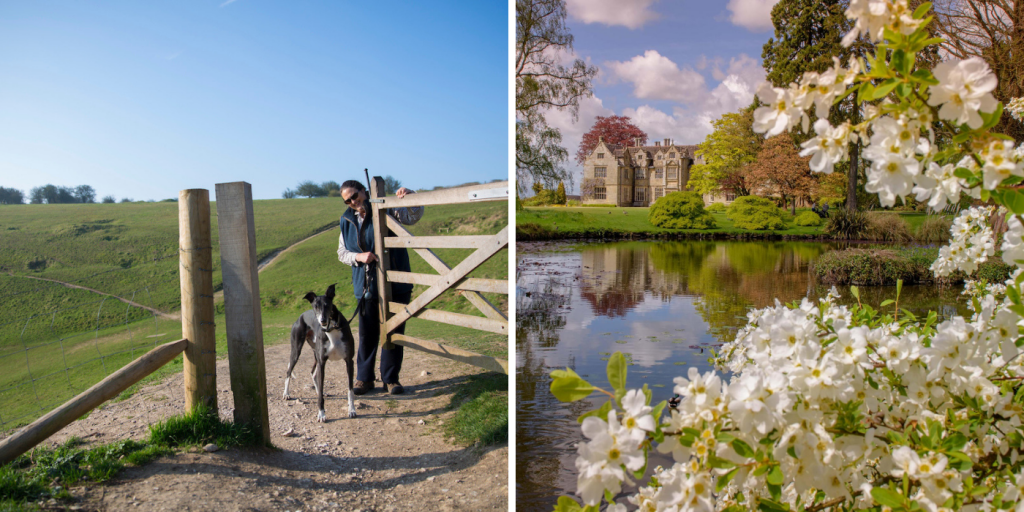
Midhurst
Harting Down
A unique area of ancient chalk downland, wild flowers and scattered woodland awaits you at Harting Down, creating the sense of timelessness that truly awakens the imagination. Explorers and historians can seek out where an Iron Age hill fort once stood or uncover the remains of a telegraph station from the Napoleonic war, whilst fans of nature can seek out the rare wildlife and unwind in secluded valleys with the surroundings of birdsong.
Uppark House and Garden – Closed until summer 2025
Uppark House is a Grade II listed, stunning 17th century home in the Harting area of West Sussex that was once renowned for its high society parties. With stunning views from the Downs out to the English Channel, an adjacent meadow and woodland in which to picnic and explore, and a variety of summer events such as outdoor theatre and jazz, Uppark House and Garden makes a fascinating property to discover and transport you back in time.
Make a weekend out of it: Why not check into the Park House Hotel & Spa to complement your cultured weekend in Midhurst?
Woolbeding Countryside and Gardens
Woolbeding Countryside is a tranquil nature reserve with open parkland and commons, home to many grazing cows, pigs and sheep. Your little ones will love exploring the wildlife along the River Rother, where reptiles and beetles make their homes, and you can follow a peaceful walking route along into Midhurst town.
The colourful Woolbeding Gardens is open at select times during the summer months but well worth a visit if you get the opportunity.
Local favourite: Pop into Midhurst food store and delicatessen, Comestibles, to peruse the local produce and relax with a coffee and a tasty treat.
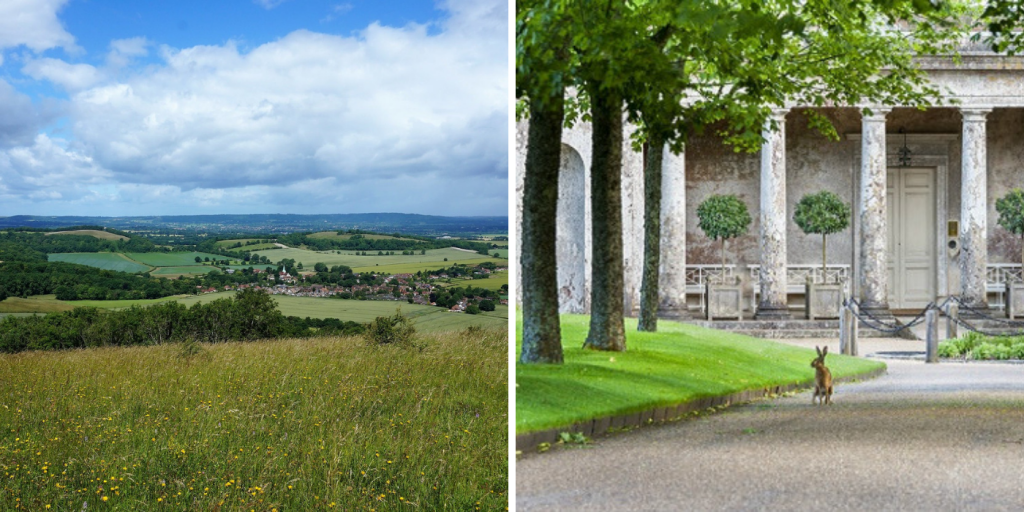
Petworth
Lavington Common
A peaceful heathland landscape, Lavington Common has been designated a Site of Special Scientific Interest for its heath, grassland, woodland and rich community of wildlife, including adders and lizards. Keen nature lovers can pick a secluded spot to sit back and watch the wildlife pass by – why not take the kids along to see what they can hear amongst the heathland or if they can sketch the wildlife they encounter?
Feeling peckish? The White Horse Graffham is a charming local pub and bed and breakfast just a five minute drive away, serving mouth-watering dishes in stunning countryside surroundings.
Petworth House and Park
Despite spanning 900 years of history, the grand country house you see today was built in the late 17th century to rival the ornate palaces of Europe. Petworth House is home to a breath-taking collection of world class art, with palatial wooden carved rooms, the earliest English terrestrial globe in existence and a glimpse of life in the Servants’ Quarters. Outside, roam the beautifully landscaped Petworth Park with its many rolling hills and tranquil ponds, plus look out for the many grazing deer that call the grounds their home.
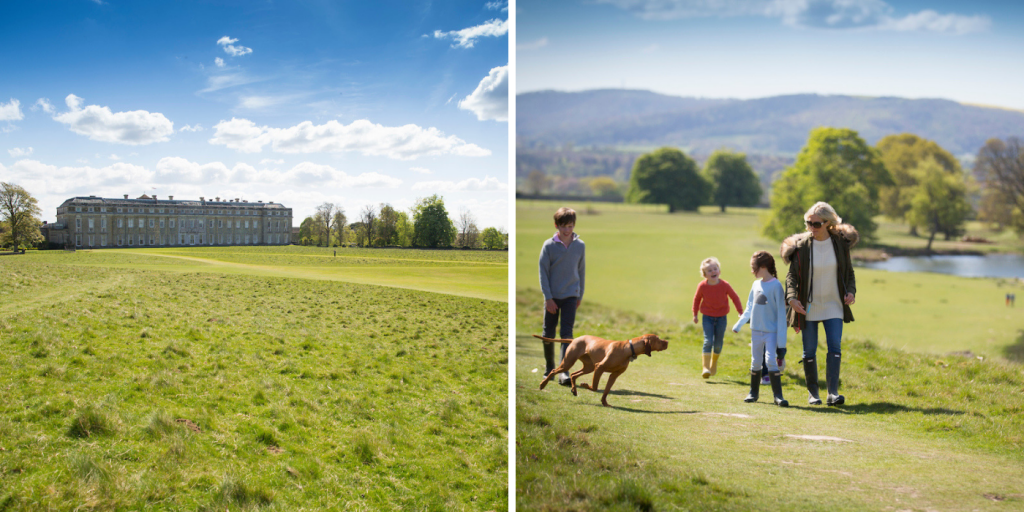
Worthing
Cissbury Ring
Cissbury Ring has a history dating back around 5000 years, including being an ancient burial ground, an Iron Age fort and Roman settlement. Its position as the largest hill fort in Sussex makes Cissbury Ring a popular viewpoint and walking destination for many, with a network of footpaths and bridleways shooting off in all directions. Why not try walking both the Cissbury and Chanctonbury Rings?
Make a day of it: Pair your visit with a tour and tasting at the Wiston Wine Estate and explore a little more of this corner of West Sussex.
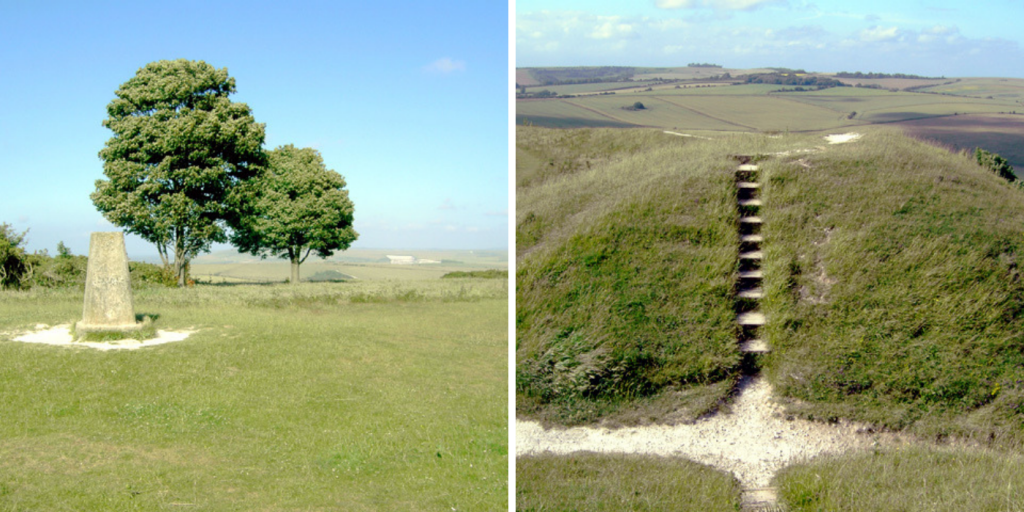
Share your National Trust adventures with us! We’d love to know your favourite West Sussex spots – tag us in your posts on Instagram, Facebook or Twitter.

